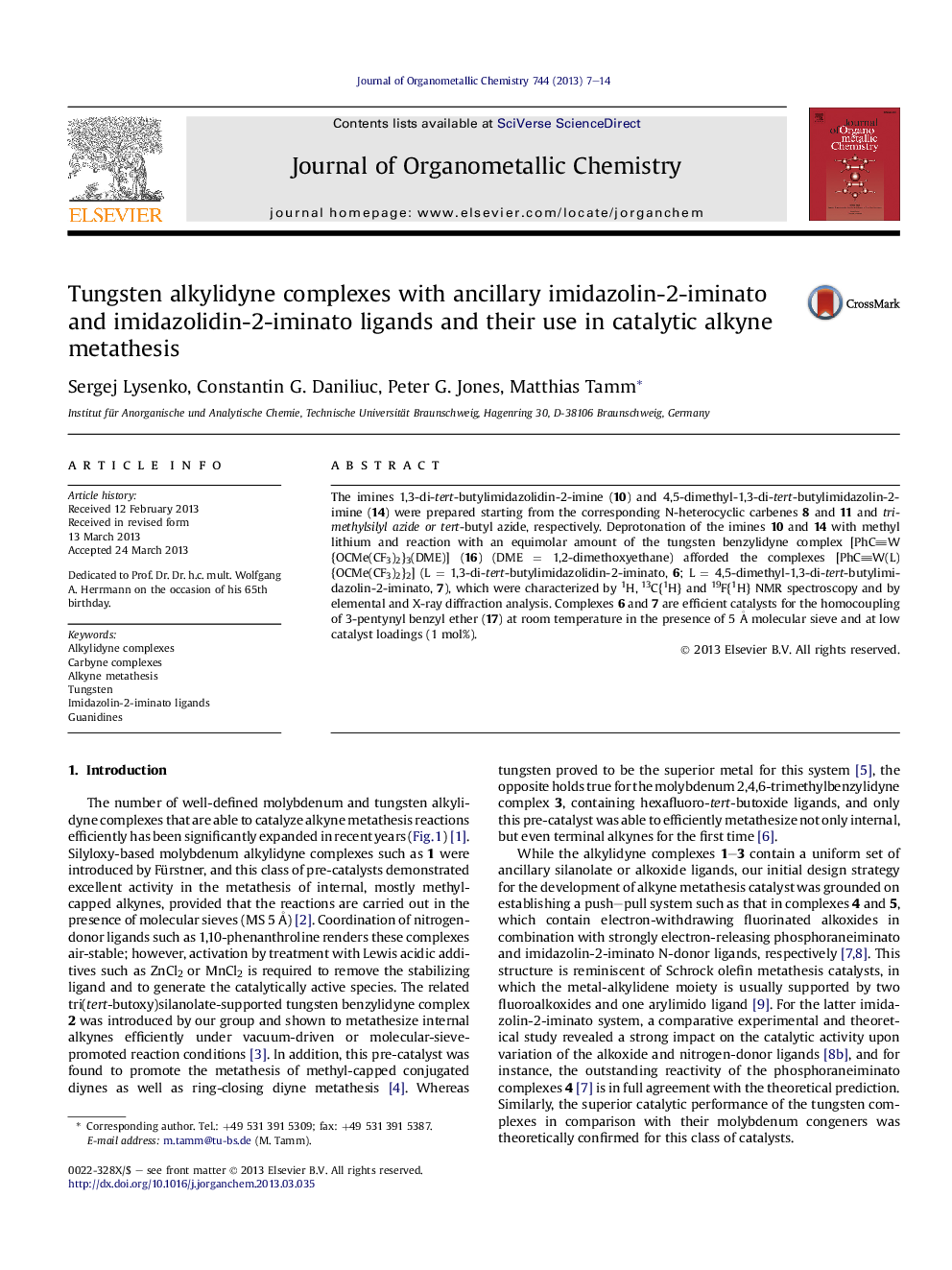| Article ID | Journal | Published Year | Pages | File Type |
|---|---|---|---|---|
| 1324383 | Journal of Organometallic Chemistry | 2013 | 8 Pages |
•Two novel tungsten benzylidyne complexes with imidazolidin-2-iminato and imidazolin-2-iminato ligands were prepared.•Highly active catalysts for alkyne metathesis under ambient conditions were obtained.•The stereoelectronic properties of the ancillary ligands have a high impact on the catalyst performance.
The imines 1,3-di-tert-butylimidazolidin-2-imine (10) and 4,5-dimethyl-1,3-di-tert-butylimidazolin-2-imine (14) were prepared starting from the corresponding N-heterocyclic carbenes 8 and 11 and trimethylsilyl azide or tert-butyl azide, respectively. Deprotonation of the imines 10 and 14 with methyl lithium and reaction with an equimolar amount of the tungsten benzylidyne complex [PhCW{OCMe(CF3)2}3(DME)] (16) (DME = 1,2-dimethoxyethane) afforded the complexes [PhCW(L){OCMe(CF3)2}2] (L = 1,3-di-tert-butylimidazolidin-2-iminato, 6; L = 4,5-dimethyl-1,3-di-tert-butylimidazolin-2-iminato, 7), which were characterized by 1H, 13C{1H} and 19F{1H} NMR spectroscopy and by elemental and X-ray diffraction analysis. Complexes 6 and 7 are efficient catalysts for the homocoupling of 3-pentynyl benzyl ether (17) at room temperature in the presence of 5 Å molecular sieve and at low catalyst loadings (1 mol%).
Graphical abstractFine-tuning of the steric and electronic properties of the ancillary N-donor ligands in tungsten benzylidyne complexes reveals a noticeable impact on their activity in catalytic alkyne metathesis; however, all catalysts 5–7 exhibit exceptional catalytic activity under ambient conditions in the presence of molecular sieves for 2-butyne adsorption.Figure optionsDownload full-size imageDownload as PowerPoint slide
